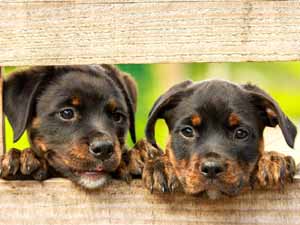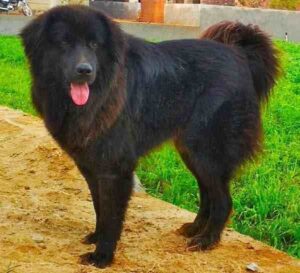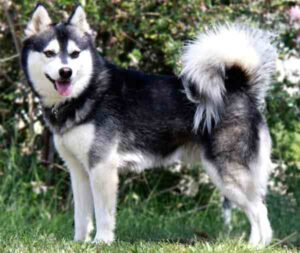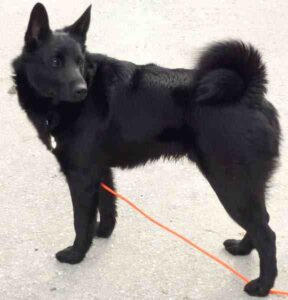The Bull Terrier dog is a breed of dog in the terrier family. There is also a miniature version of this breed which is officially known as the Miniature Bull Terrier. The breed is also known by some other names such as English Bull Terrier, Bully and Wedge Head.
The Bull Terrier dog breed was originally developed in the nineteenth Century as a fighting dog and, later, a fashionable companion for gentlemen. But today, they are popular as family companion and show dog. It is the dog breed which is easily distinguished by it’s long, egg-shaped head.
The Bull Terrier dog breed dates to approximately 1835 and was probably crated by crossing a Bulldog with the now-extinct white English Terrier. These ‘bull and terrier’ dogs were later crossed with Spanish Pointers to increase their size. They were known as gladiators for their prowess in the dog-fighting ring.
In the year of 1860, fanciers of the bull and terrier, in particular a man named James Hinks, set about creating an all-white dog. The striking animals became fashionable companions for gentlemen and were nicknamed ‘White Cavalier’ because of their courage in the dog-fighting ring and their courtliness toward people.
While they were no longer used for fighting, white Bull Terriers still go by that sobriquet to this day, a tribute to their sweet disposition.
The AKC (American Kennel Club) registered the first Bull Terrier dog in 1885. The Bull Terrier Club of America was formed after 12 years later in 1897. And in 1936, the colored Bull Terrier was made a separate variety, and the Miniature Bull Terrier became a separate breed in 1992.[1]
Bull Terrier Dog Characteristics
The Bull Terrier dogs are medium in size with very beautiful appearance. Their most recognizable feature is their head, which is described as ‘egg-shaped head’. When viewed from the front, the top of the skull is almost flat.
The profile curves gently downwards from the top of the skull to the tip of the nose, which is black and bent downwards at the tip, with well-developed nostrils.
The lower jaw of the Bull Terrier dog is deep and strong. The unique triangular eyes are small, dark, and deep-set. The Bull Terriers are the only dogs that have triangular eyes.
Their body is full and round, with strong and muscular shoulders. Their tail is carried horizontally. Their coat is short and dense. In case of coloration, they are either white, red, fawn, black, brindle, or a combination of these colors.
Average height of the mature Bull Terrier dogs is between 18 and 22 inches at the withers. Average live body weight of the mature dogs is between 25 and 29 kg for males, and between 20 and 25 kg for the females.
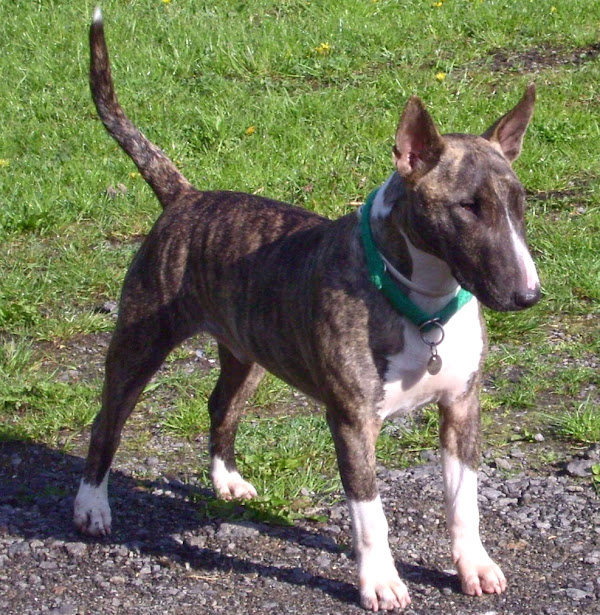
Temperament
The Bull Terrier dogs can be both independent and stubborn, and for this reason they are not considered suitable for an inexperienced dog owner.
A Bull Terrier dog has an even temperament and is amenable to discipline. Although obstinate, the breed is described by the Bull Terrier Club as particularly good with people.
Early socialization will ensure that the dog will get along with other dogs and animals. Their personality is described as courageous, full of spirit, with a fun-loving attitude, a children loving dot and a perfect family member.
Lifespan
Average lifespan of the Bull Terrier dogs is between 10 and 14 years.
Feeding
How much a mature dog eats depends on it’s size, age, build, metabolism and activity level. Dogs are individuals, just like people, and they don’t all need the same amount of food.
The Bull Terrier dogs are medium in size, and they are pretty active. So, their diet should be formulated for a medium sized breed with average exercise needs. You can consult with a vet in your area for better feeding recommendations.
Caring
Taking good care of the animals is very important for raising Bull Terrier dogs. They are pretty active dogs and require about half an hour to an hour of physical and mental exercise daily. They generally enjoy going for walks, chasing a ball or testing their wits against an interactive toy.
Early and consistent training is essential. You must be able to provide leadership without resorting to physical force or harsh words. A Bull Terrier is not the easiest breed to train, and you will be most successful if you appeal to it’s love of play with positive reinforcement techniques while still remaining firm and consistent in what you expect.
The Bull Terrier dogs are suspicious of strangers and can be aggressive toward other animals and people. So early socialization will help your dogs to become gentile with strangers.
Health
The Bull Terrier dogs are generally healthy. But like all other dog breeds, they are also prone to certain health conditions.
Their common health problems include hereditary nephritis, deafness, heart disease, lens luxation, spinning and skin problems. Always try to keep good contact with a vet in your area.
| Breed Name | Bull Terrier |
| Other Names | Also known as English Bull Terrier, Bully and Wedge Head |
| Breed Size | Medium |
| Height | Between 18 and 22 inches at the withers |
| Weight | Between 25 and 29 kg for males, and between 20 and 25 kg for the females |
| Good as pets | Yes |
| Climate Tolerance | All climates |
| Color | White, brindle, fawn, red, red smut, black, and tricolor (black, red and white mixture) |
| Lifespan | Between 10 and 14 years |
| Good for children | Yes |
| Rarity | Common |
| Country of Origin | England |

